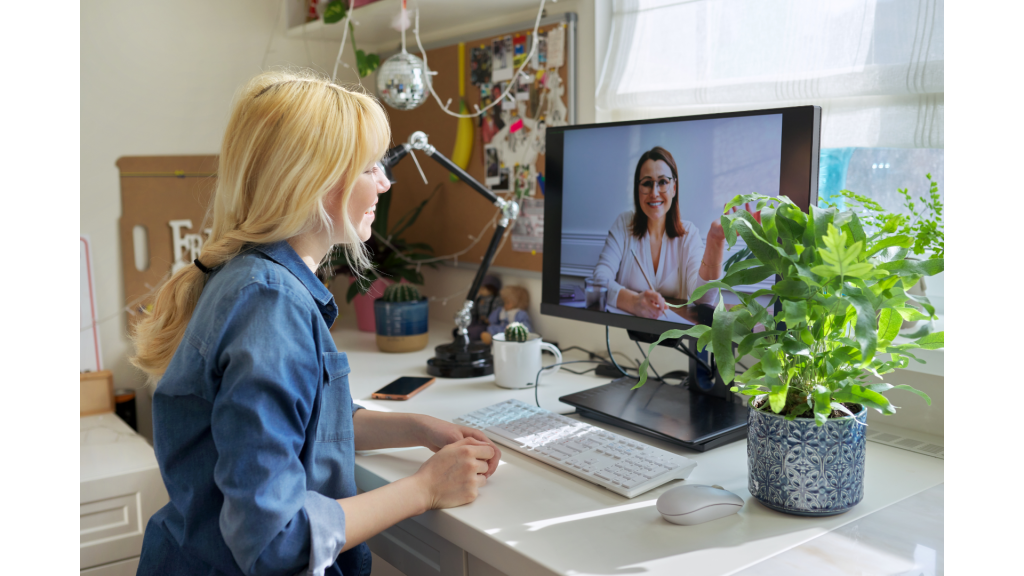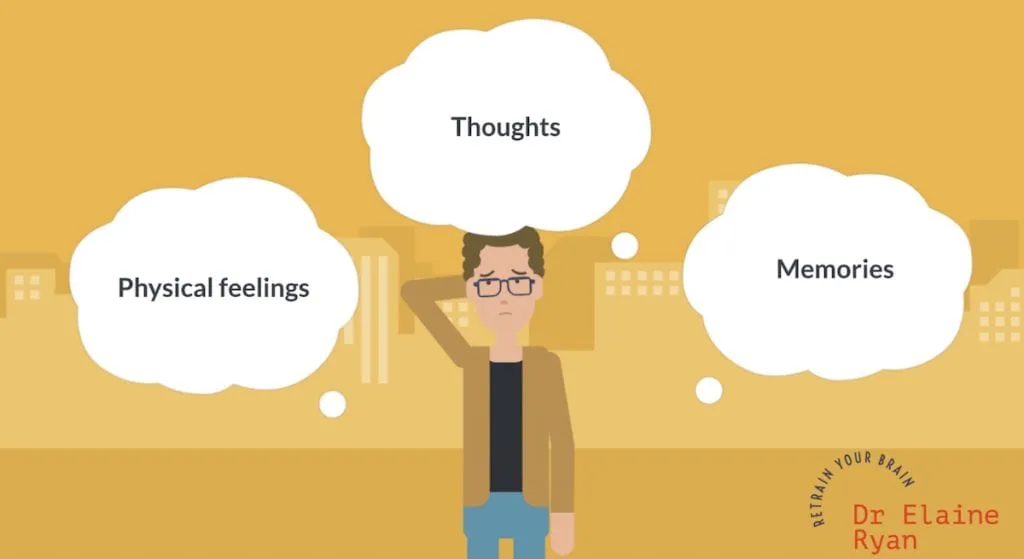Contrary to what you might think, the trigger for your anxiety is not a person, place or thing; instead, the catalyst can fall under one of three things; thoughts, memories and sensations. This is true regardless of which type of anxiety disorder you have.
When they start therapy with me, most people think that something external is causing their anxiety. In this article, I want to show you how to get to grips with your anxiety by focusing on your real triggers and your internal processes.
Table of contents
Retrain Your Brain®

Dr Ryan’s online self-help course for anxiety
Understanding anxiety triggers will help you.
Anxiety can feel out of control; almost anything can trigger it and leave you helpless. Understanding the trigger for your anxiety is not a shopping centre, crowds, or something else ‘out there but falls under feelings, thoughts and memories, which gives you control.
Like most people with an anxiety disorder, you spend a lot of energy trying to control your life to avoid feeling anxious. This might include avoiding certain things that you believe are triggers. This may work short term, but you avoid more stuff, in the long run, making your life smaller.
I will explain to you now that you can stop focusing on the never-ending list of things that can make you anxious and focus on the following three things to help you control your life again and feel less stress.
- Thoughts
- feelings
- memories
When the trigger is not something external.
If we could identify the trigger for anxiety as a person, place or thing, everyone would feel anxious when they encounter it. You might feel worried about leaving your house, but not everyone does. You might get nervous if you have to go to a large shopping centre or stand up and make a speech, but this does not hold for everyone.
Something has to happen internally for you to create anxious feelings. I would like you to be open to the idea that how you interact, process, or experience the person, place, or thing results in the stress or panic, you feel.
Worked example, Social Anxiety
Mark’s GP referred him to me for psychological therapy for social anxiety. He avoids situations where he feels people would notice him or judge him.
I asked Mark to explain what he avoids, and he told me he had just said no to a friend’s wedding. When I asked why he said he was afraid of making a fool of himself or being asked to give a speech. I proposed it is not the wedding he is scared of; instead, it sounds like he is reacting to the scenarios inside his head, things that could happen. Mark avoids or declines many invitations based on this reasoning that he could be judged.
Mark explained that he has been in a social situation where he felt embarrassed and does not want it to happen again. Here, it is a memory of an uncomfortable situation that leads to avoidance. When I asked what happened, he said he blushed and shook his hand while giving a speech. I asked him, it was the actual presentation that troubled him or the blushing and the shaking, and he replied it was the physical sensations, the feelings.

Worked example, Panic Disorder
Clare’s GP referred her for CBT for Panic Disorder. I asked how this affected her day-to-day life, and she told me she could not drive anymore out of fear of having a panic attack, as that had happened before. When I asked how often she has had a panic attack in the car, she replied once. She has been driving for over 20 years. Is it the actual car or driving the vehicle that is triggering panic attacks? I asked her what happens when she thinks about driving, and she told me she is afraid of it happening again. She is scared of the feelings in her body and what might happen; also, the memory of the panic attack in the car is vivid.
People with anxiety disorders are often afraid of physical sensations. What you feel in your body is not enough to act as a trigger; what triggers your anxiety is your interpretation of the feeling, i.e. your thoughts. How you make your interpretation of the physical sensation will be based on your experiences, and your memories.
Worked example Generalised Anxiety Disorder
Patricia attended therapy for GAD and explained how she needs to know where the bathroom is before she goes out. For example, if she is in a new restaurant, she gets anxious until she can work out where the loos are. She also likes to plan her route through the tables before she gets off her seat.
Patricia believes that not knowing the new place’s layout makes her anxious. I asked her what the difference was once she identified the location and route to the bathroom. She says she feels safer knowing she won’t make a fool of herself should she go to the bathroom. The thought that she will make a fool of herself creates and then calms her anxiety.
How to put this information to use.
Hopefully, you can see in my brief examples; it will be more worthwhile focusing on your thoughts, feelings and memories to ease anxiety rather than controlling your external world. We can think of these three internal processes as pathways that result in anxiety. The following video briefly explains one pathway.
People often have a mix of thoughts, feelings and sensations that trigger anxiety, and knowing this helps you manage stress. You can help yourself with your thought processes using Cognitive Behavioural Therapy. Understanding amygdala-based anxiety can help with uncomfortable sensations and memories.
Further reading on different anxiety triggers can be found on Healthline

